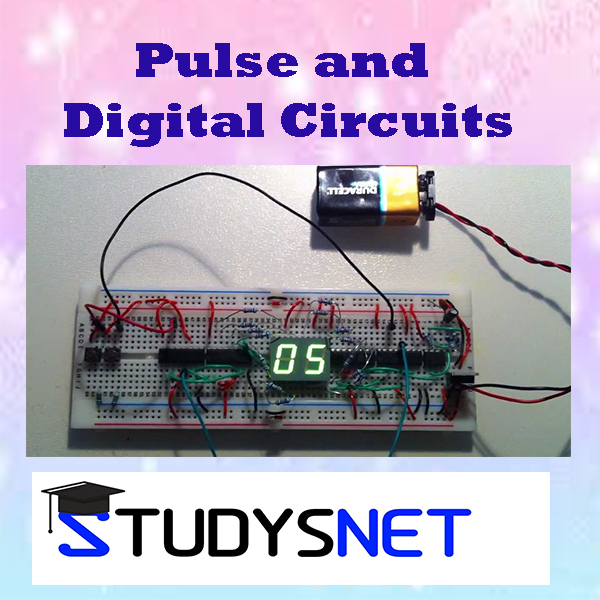Pulse and Digital Circuits free videos and free material uploaded by Ramanjaneyulu K .
Objective :
The student will be made
• To understand the concept of wave shaping circuits, Switching Characteristics of diode and transistor.
• To study the design and analysis of various Multivibrators.
• To understand the functioning of different types of time-base Generators.
• To learn the working of logic families & Sampling Gates.
UNIT- I
LINEAR WAVESHAPING: High pass, low pass RC circuits, their response for sinusoidal, step, pulse, square, ramp and exponential inputs. RC network as differentiator and integrator; Attenuators , its applications in CRO probe, RL and RLC circuits and their response for step input, Ringing circuit.
UNIT- II
NON-LINEAR WAVE SHAPING : Diode clippers, Transistor clippers, clipping at two independent levels, Transfer characteristics of clippers, Emitter coupled clipper; Clamping operation, clamping circuits using diode with different inputs, Clamping circuit theorem, practical clamping circuits, effect of diode characteristics on clamping voltage, Transfer characteristics of clampers.
UNIT- III
SWITCHING CHARACTERISTICS OF DEVICES : Diode as a switch, piecewise linear diode characteristics, Design and analysis of Transistor as a switch, Break down voltage consideration of transistor, saturation parameters of Transistor and their variation with temperature, Design of transistor switch, transistor-switching times. Bistable Multivibrator: Analysis And Design of Fixed Bias, Self Bias Bistable Multi Vibrator, Collector Catching Diodes, Commutating Capacitors, Triggering of Binary Circuits, Emitter Coupled Bistable Multivibrator (Schmitt Trigger).
UNIT- IV
Monostable Multivibrator: Analysis and Design of Collector Coupled Monostable Multi vibrator, Triggering of Monostable Multivibrator, Applications of Monostable Multivibrator. Astable Multivibrator: Analysis and Design of Collector Coupled Astable Multivibrator, Application of Astable Multivibrator as a Voltage to Frequency Converter.
UNIT- V
VOLTAGE TIME BASE GENERATORS: eneral features of a time base signal, Methods of generating time base waveform Exponential Sweep Circuits, Negative Resistance Switches, basic principles in Miller and Bootstrap time base generators, Transistor Miller time base generator, Transistor Bootstrap time base generator.
UNIT- VI
LOGIC FAMILIES & SAMPLING GATES: LOGIC FAMILIES: Diode Logic, Transistor Logic, Diode-Transistor Logic, Transistor-Transistor Logic, Emitter Coupled Logic, AOI Logic, Comparison of Logic Families.
SAMPLING GATES: Basic Operating Principles of Sampling Gates, Diode Unidirectional Sampling Gate and Two-Diode Bi-Directional Sampling Gate, Four-Diode gates, Six-Diode Gates, Reduction of Pedestal in Sampling Gates, Applications of Sampling
- Unit-1 Pulse and Digital Circuits notes
- Unit-2 Pulse and Digital Circuits notes
- Unit-3 Pulse and Digital Circuits notes
- Unit- 4 Pulse and Digital Circuits notes
- Unit-5 Pulse and Digital Circuits notes
- Unit- 6 Pulse and Digital Circuits notes

- 0 Reviews
- 23 Students
- 73 Courses

Write a public review